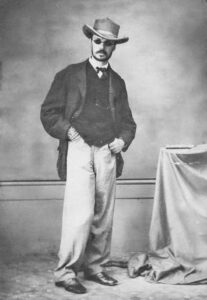The New Yorker recently ran an extended review of a new book Psychonauts: Drugs and the Making of the Modern Mind by cultural historian Mike Jay. This book discusses the use of drugs like opium, nitrous oxide and mescaline among others by scientists, artists and philosophers to penetrate alternate realms of consciousness, and perhaps of existence starting in the early 19th century. Nearly a hundred years later, Aleister Crowley would become part of this psycho-spiritual exploration as he documented extensively in his diary entries, writings on the theory and practice of magick and even in the fictional work, Diary of a Drug Fiend. Most of y’all will have already known about his involvement, but perhaps, like me, you weren’t aware of how much work in this area had happened in the century before he took it up. Hell, even Diary of a Drug Fiend echoes previous titles like Confessions of an English Opium Eater, Confessions of a Drunkard, etc. The review doesn’t mention Crowley, but there is this nugget”
‘In 1855, the French mystic Louis-Alphonse Cahagnet, who maintained that hashish could act as a portal to parallel worlds, passed his secrets to a travelling American, Paschal Beverly Randolph: a “Black Rosicrucian sex magician,” Jay writes, who specialized in “marital problems,” and who found in hashish his “defining magical aid.” “Cahagnet, myself, and others, have been enabled to pass through eternal doors, forever closed to the embodied man save by this celestial key,” Randolph enthused. He believed that the drug’s état mixte allowed for insights that would “leap the world’s barriers.” He also believed that such insights could be bottled and sold. In 1862, when he returned to the U.S., he created a range of hashish-based elixirs promising clairvoyant powers, which he priced at four dollars each.’


